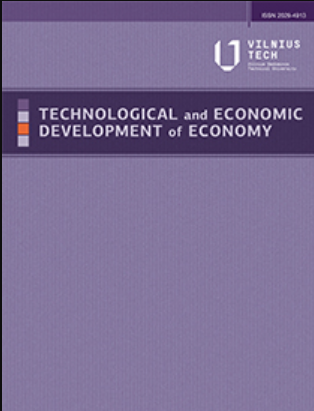撒哈拉以南非洲中等收入国家建筑业发展模式
IF 4.8
2区 经济学
Q1 ECONOMICS
引用次数: 0
摘要
建筑物和其他建筑设施构成了一个国家物质和经济基础设施的基本框架。建筑是生产的关键资本投入,推动着经济增长和财富创造。在中低收入国家,这种影响尤其具有变革性。包括建筑在内的有形基础设施是经济增长的强大引擎,与国家经济表现密切相关。然而,并非所有研究都同意建筑投资对经济增长具有积极影响这一普遍看法,尤其是在投资额以及建筑投资与经济增长之间的关系方面。迄今为止,有关建筑业与经济增长关系的跨国研究都使用了国家产出和建筑业指标,而这些指标在各国之间并不具有严格的可比性。本文回顾了有关建筑业在国民经济和经济发展中作用的主要文献。文章还使用了来自 PENN 世界表(10.1 版)"资本档案 "的新数据,以评估 1990 年至 2019 年期间两组处于中等收入经济发展水平的撒哈拉以南非洲(SSA)国家的建筑业发展模式。研究显示,建筑业份额(以建筑业占国内生产总值的固定资本形成总额的比例来衡量)围绕着一个由基准期之前的已建资产水平决定的标准。研究结果可能对撒南非洲建筑业的经济可持续性产生政策影响。本文章由计算机程序翻译,如有差异,请以英文原文为准。
A MODEL FOR CONSTRUCTION SECTOR DEVELOPMENT IN MIDDLE-INCOME SUB-SAHARAN AFRICAN COUNTRIES
Buildings and other constructed facilities form the essential framework of a country’s physical and economic infrastructure. Construction serves as a key capital input to production, driving economic growth and wealth generation. This impact can be particularly transformative in low-to-middle-income countries. Physical infrastructure, including construction, is a powerful engine of economic growth and is closely related to national economic performance. However, not all studies agree with the commonly held belief that construction investment has a positive impact on economic growth, particularly concerning the amount of investment and the relationship between construction investment and economic growth. So far, cross-country studies dealing with the construction sector-economic growth relationship have used indicators of national output and construction that are not strictly comparable between countries. This article reviews the main strands of the literature on the role that the construction sector plays in the national economy and economic development. It also uses novel data drawn from the “capital file” of the PENN World Table (version 10.1) to assess the development pattern of the construction sector in two groups of sub-Saharan African (SSA) countries on the middle-income status of economic development, for the period between 1990 and 2019. The study reveals that construction shares, measured as the proportion of gross fixed capital formation attributable to construction in the gross domestic product, revolve around a norm determined by the level of built assets preceding the reference period. The results of the study could have policy implications for the economic sustainability of the construction industry in SSA.
求助全文
通过发布文献求助,成功后即可免费获取论文全文。
去求助
来源期刊
CiteScore
10.00
自引率
8.50%
发文量
66
审稿时长
15 weeks
期刊介绍:
Technological and Economic Development of Economy is a refereed journal that publishes original research and review articles and book reviews. The Journal is designed for publishing articles in the following fields of research:
systems for sustainable development,
policy on sustainable development,
legislation on sustainable development,
strategies, approaches and methods for sustainable development,
visions and scenarios for the future,
education for sustainable development,
institutional change and sustainable development,
health care and sustainable development,
alternative economic paradigms for sustainable development,
partnership in the field of sustainable development,
industry and sustainable development,
sustainable development challenges to business and management,
technological changes and sustainable development,
social aspects of sustainability,
economic dimensions of sustainability,
political dimensions of sustainability,
innovations,
life cycle design and assessment,
ethics and sustainability,
sustainable design and material selection,
assessment of environmental impact,
ecology and sustainability,
application case studies,
best practices,
decision making theory,
models of operations research,
theory and practice of operations research,
statistics,
optimization,
simulation.
All papers to be published in Technological and Economic Development of Economy are peer reviewed by two appointed experts. The Journal is published quarterly, in March, June, September and December.

 求助内容:
求助内容: 应助结果提醒方式:
应助结果提醒方式:


